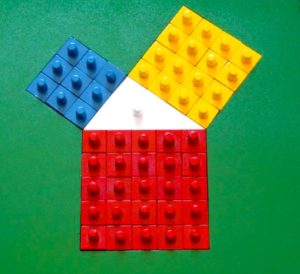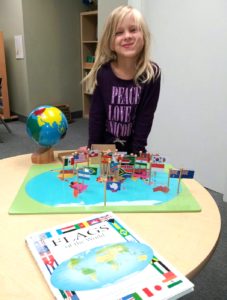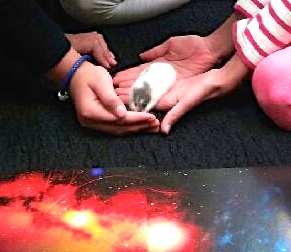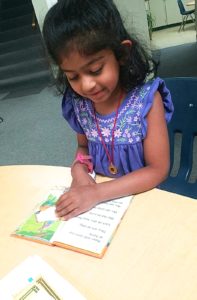Why RICHARDSON MONTESSORI?
We love what we do:
We are passionate learning enthusiasts building strong foundations with love for over 25 years! We foster a love of life and the joyful pursuit of knowledge in every aspect of our work with children. Love Learning! Love Life!
The Child:
At Richardson Montessori, we see each child as uniquely beautiful. We dedicate ourselves to building a strong rapport through love, positivity and respect.
We see the building of confidence and high self-esteem as essential springboards to success. We are committed to creating a positive, encouraging atmosphere where students feel empowered to take new steps and are inspired to explore their personal potentials.
The Family
At Richardson Montessori, we work collaboratively with families to optimize our understanding of your child and her or his unique needs. Ongoing communication between parents and teacher is an integral part of our successful teaching-learning process.
The Teaching-Learning Process:

We design an individual pathway to success based on your child’s unique needs, abilities and learning styles.
We use beautiful 3D materials as opposed to a computerized, 2 dimensional approach to lessons. Concepts are brought to life through engaging Montessori lessons and attractive, concrete materials. The colourful, hands-on manipulatives are fun and actively engage the child, helping to focus attention, provide clarity and a roadmap to abstraction. This multi-sensory, movement-based approach develops essential tools such as strong concentration skills and long-term memory for successful life long learning.
We identify the conceptual gaps and focus on building strong foundations in math, geometry and language as springboards to higher learning while enabling students to meet and exceed grade level expectations. Students with exceptionalities such as ADD, ADHD, developmental delays, memory issues and Dyslexia, expand their personal potentials achieving new levels of confidence and mastery. Often they are able to meet and exceed grade level expectations in one or more subject areas with the use of concrete Montessori materials.
We spiral the presentation of knowledge and concepts from the simplest to complex allowing ample time for practice and the crystallization of key elements. A spiraled presentation also facilitates the ordering and classification of knowledge in the child’s mind and establishes pathways for making logical connections and associations for future learning.
We isolate concepts to allow for optimal understanding. Too often many exceptions or variations are presented together. This leads to frustration and a muddied ordering and classification of knowledge in the child’s mind, ultimately, putting a student’s confidence, self-esteem and interest in learning at risk.
We begin with the big picture of a subject to ground students in a topic, building a sense of purpose, enthusiasm and appreciation for the course of study.
Who were the first mathematicians? What did the first number systems look like?
Why was Geometry invented and what were the earliest tools of measurement? Why do we measure circles in 360 degrees?
Who spoke the first word and what part of speech might it have been: a noun, verb, adjective?
Who invented writing and why? What did the earliest alphabets look like?
For some of these questions, there are no precise answers but young imaginations are stirred along with an appreciation for knowledge and the forepeople of discovery across the ages. Students become more fully engaged in their lessons with an understanding of the story behind subjects and their place within the larger context of the world and universe.



